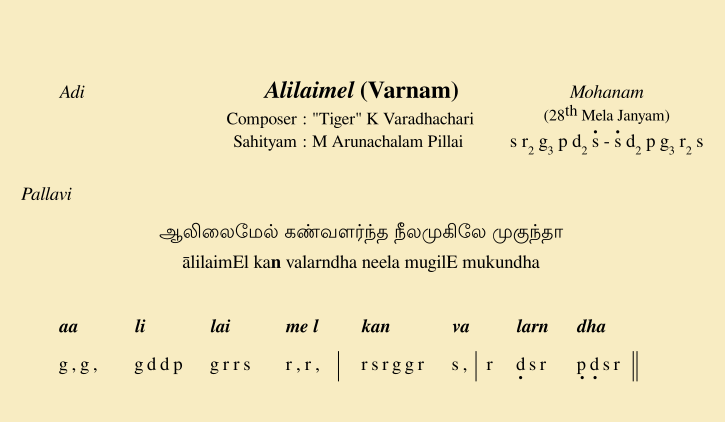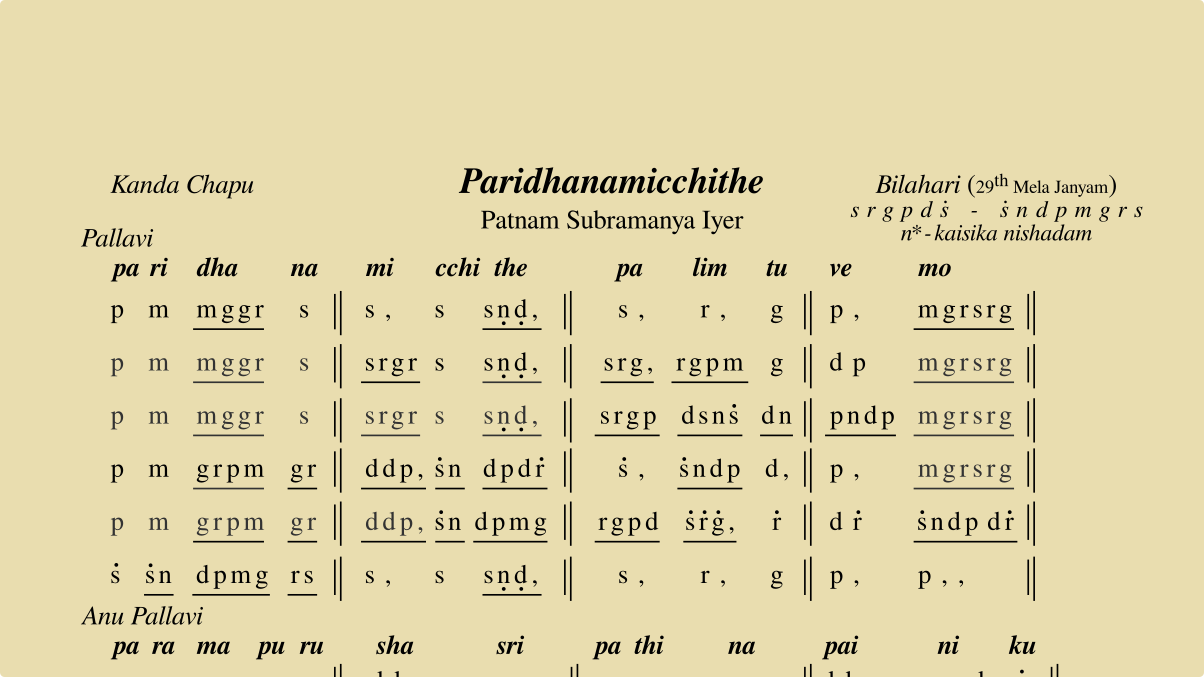Carnatic Swaram: Ga
This is a series on Sapta Swaras, the seven musical notes of Carnatic music. We discussed about swaram Ri in the previous post. Now let’s explore the next swaram Ga.
Gandharam is the third swaram of Sapta Swaras. It’s shortened as Ga while uttering the note in a Swara Kalpana, or while talking about the swaram informally. It can also be shortened further as simply g in music notations.
Swara Sthanams
In the last post we learned about the three swarasthanams of Ri. Similarly, Ga also has three distinct swarasthanams. They are:
Carnatic Swaram: Ri
In Carnatic music there are seven musical notes, the Sapta Swaras. They are Sa, Ri, Ga, Ma, Pa, Dha and Ni. In this series we’ll take a look at each of these swarams, the pitch positions they take (swara sthanams), and the relationships between them.
Pitch is something you would have already felt when singing. Some notes sound low pitch and some sound high pitch. There are fixed number of pitches. We are going to understand how these pitches are related to sapta swaras. We will also understand how these sapta swaras are related to each other.
The first swaram, Sa, is of great importance. It will be dealt in detail in another post. This post is about Ri. For now, it’s suffice to know that all swarams fall in place based on the position of Sa. Let’s move on.
Rishabam is the second swaram in our Sapta Swaras. It is abbreviated to Ri, or simply r in music notations. Note that Ri is right next to
Notation: Alilaimel - Mohanam - Tiger Varadhachari
- Varnam: Alilaimel Kan Valarndha
- Ragam: Mohanam
- Thalam: Adi
- Composer: “Tiger” K Varadhachari
- Sahityam: M Arunachalam Pillai
Learning to Identify Swarasthanas
How would one learn to identify swarasthanas when listening to carnatic music? Are varisai exercises enough to gain this critical skill?

Patnam Subramanya Ayyar
July 31, 2019 marks the 117th death anniversary of Patnam Subramanya Ayyar (1845-1902), a great carnatic composer, performer and teacher.
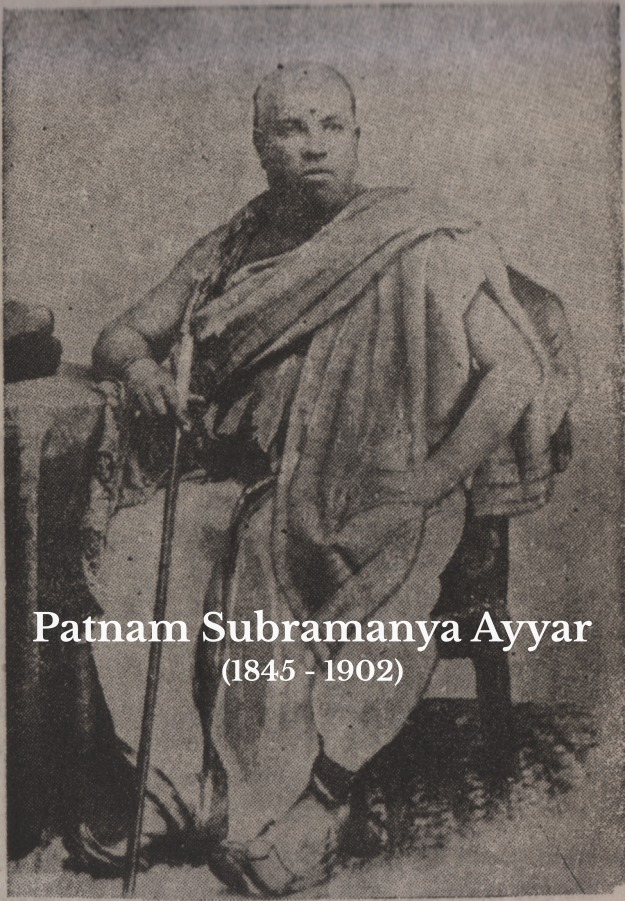
Notation: Paridhanamicchithe - Bilahari - Patnam Subramanya Ayyar
- Kriti: Paridhanamicchithe Palimthuvemo
- Ragam: Bilahari
- Thalam: Kanda Chapu
- Composer: Patnam Subramanya Ayyar
Carnatic Swarasthana Challenge No. 1
How good are you in identifying swarasthanas when you hear a musical sequence? Try this challenge:
Importance of this exercise
There are six valid combinations of Ri and Ga in Carnatic music (and very similarly there are six combinations of Dha and Ni). Cycles of Ri-Ga combinations and Dha-Ni combinations are the basis of the 72 Melakartha scheme, which is one of the backbones of our raga system.
Prince Rama Varma on Swara Gnanam
Prince Rama Varma, an eminent carnatic musician and teacher, points out a shortcoming in swara gnanam that’s common even among advanced carnatic musicians. He also explains why it is common in our traditional raga-by-raga learning process:
Carnatic Swarasthanas
Carnatic music has 16 swarasthanas packed in 12 distinct positions. The 12 tones are more or less universal; many systems of music around the world have them, may be with some differences in the ratios/frequencies of individual notes. (Checkout Shruti Carnatic Tuner for precise swarasthanas used in Carnatic music)
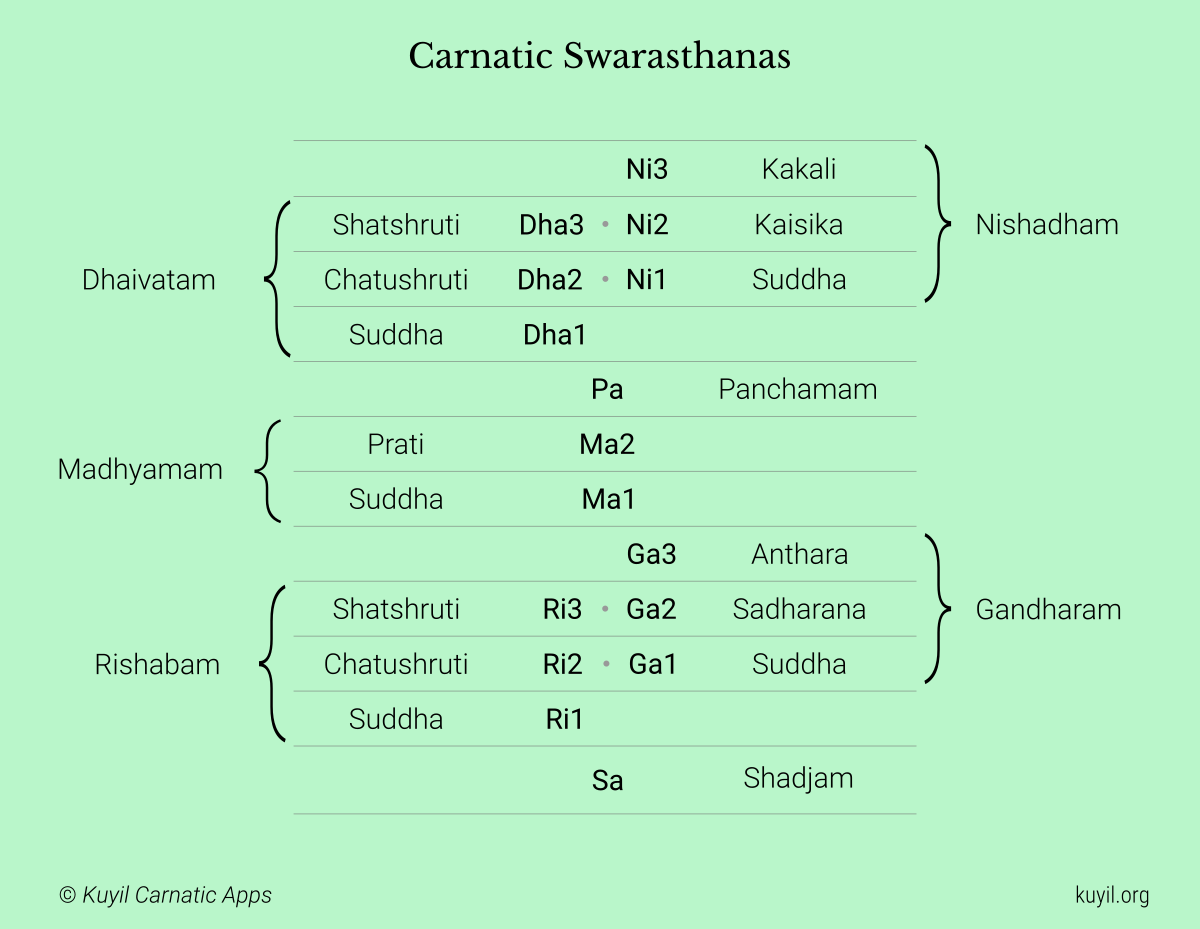
In addition to the usual 12 notes, Carnatic music has 4 more swarasthanas, however they simply share their positions with existing notes. Sounds tricky? Not really, read on.
Building up Swara Gnanam
Sadhakam: Carnatic Swara Gnanam Practice is an android app which helps students build their Swara Gnanam. Practicing with the app, doing the interactive exercises, students gradually develop their ability to identify swarams they hear. Hearing a sound and being able to tell the swarasthanam instantly is a wonderful skill, isn’t it?
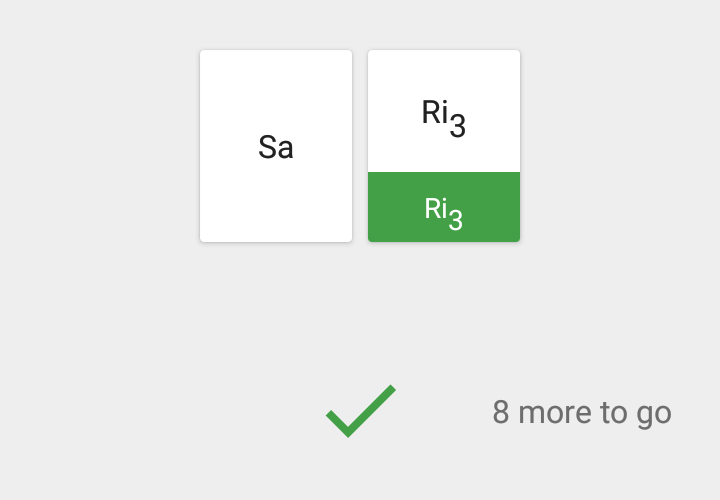
This article describes how the app works, various stages of swara gnanam development, and how to get the most out of it.
Carnatic Swarasthanas vs Western Notes
In an earlier post, we had demonstrated the difference between Carnatic Ga3 and its closest matching note on keyboards, the Major 3rd. It sparkled some discussion on forums and social media, and some of the readers began to think that only Ga3 is different from what is on keyboards while other swarasthanas are ok.
Actually, all swarasthanas deviate from their respective western notes!
Take a look at this visualization that shows the deviation of carnatic swarasthanams from their nearest western equal-tempered notes:
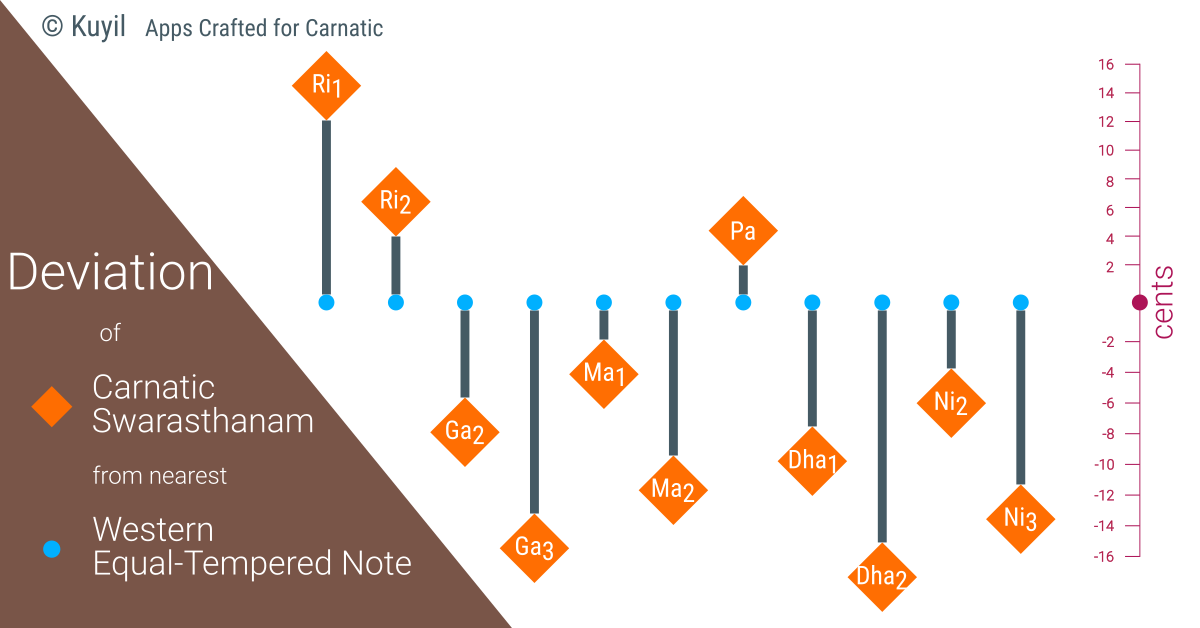
As you can clearly see from the chart:
Anthara Gandharam / Ga3
In carnatic music, Anthara Gandharam (Ga3) has a peculiar characteristic. It can be heard clearly even when we play just Sa on tambura. It is a Swayambu Swaram, comes alive automatically due to the wonderful acoustics of tambura. This phenomenon is fundamentally important for carnatic music.
On a keyboard*, Major 3rd is used to approximate Ga3. However, Major 3rd (western music) is 400 cents# whereas proper carnatic Ga3 is at 386.31 cents above Sa (5/4 ratio).
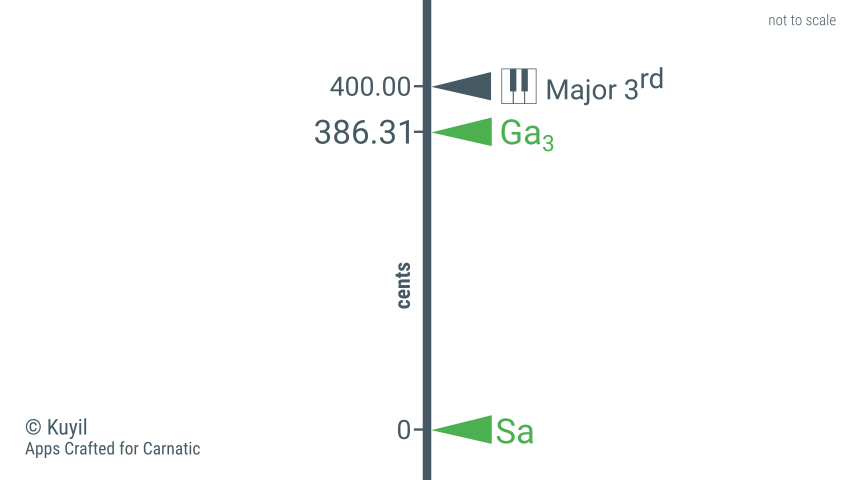
Carnatic Music Resources
Stuff on carnatic music is not usually hard to come by. Nowadays, one can look up Arohana/Avarohana of a Raga or list of compositions by a composer with a quick web search. And then there are resources- massive, huge, immense resources- that serious students and researchers should be thankful that they exist online.
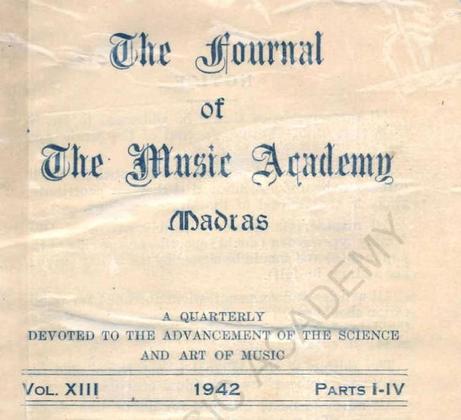
Prof. Sambamurthy: For the love of South Indian Music
14th of February is Musicologist Professor P. Sambamurthy’s birthday. I started reading his treatise, South Indian Music (6 volumes), when I got more than slightly interested in Carnatic music. I can’t say I liked it very much at first. But I knew it was a very important resource and kept coming back to it often.
At first, it didn’t feel like a crisp, concise theory book. I thought it had a lot of fluff and unnecessary boasting (about the system of music). I began appreciating the quality of the contents only after reading a few more theory books. Some of them had passages literally copied from Sambamoorthy’s, while others didn’t have much of theoretical value IMHO (particularly the ones began with “Carnatic music originated from Shiva’s head”)
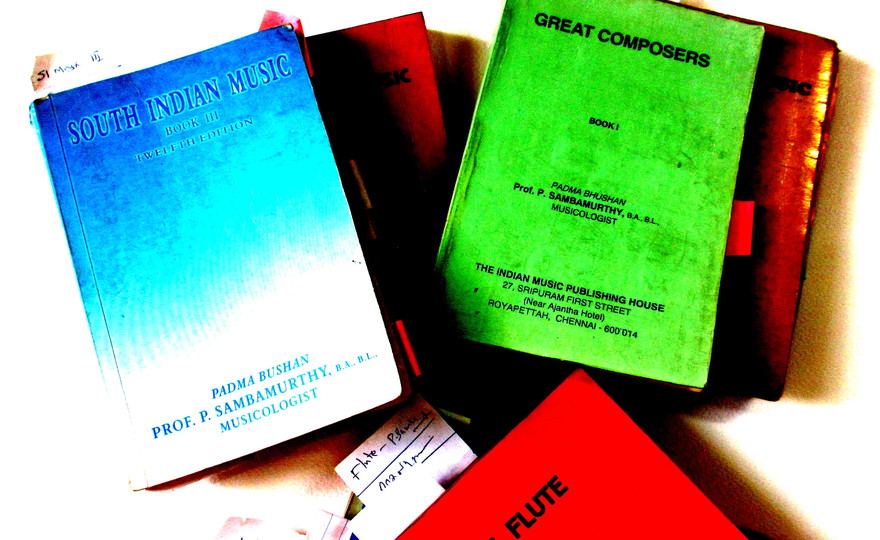
Toys
#2
#1
Guitar Improvisation in Scale Sa-ra-gu-ma-pa-dhi-ni
Su(r)li
Happy Birthday Avantgarde Tuesday!
Cool DAWs/Sequencers
Reaper is my main Digital-Audio-Workstation. It’s just awesome!

Notation: Brochevarevare - Sriranjani - Tyagaraja
- Kriti: Brochevarevare
- Ragam: Sriranjani
- Thalam: Adi
- Composer: Saint Tyagaraja
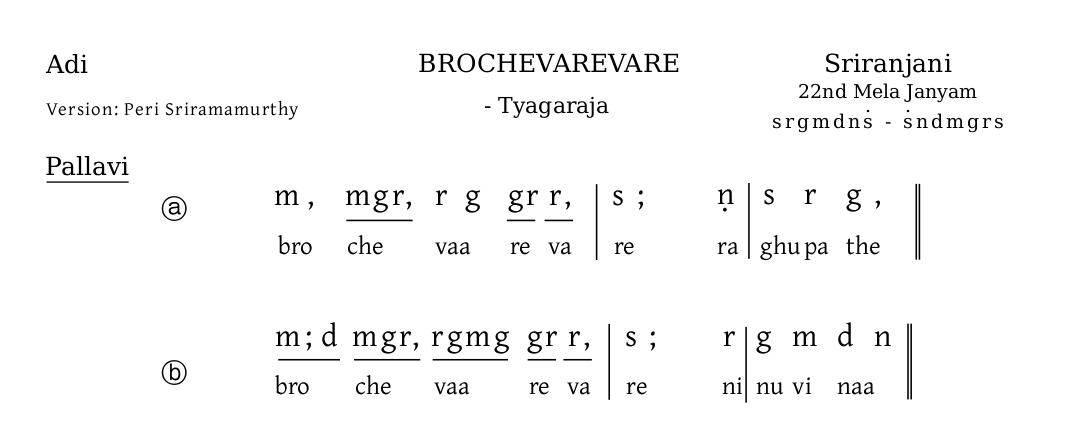
Listening/Learning Music: Some excellent Music Theory resources (Scores & Audio)
A typical page in a music theory/appreciation book looks like this -
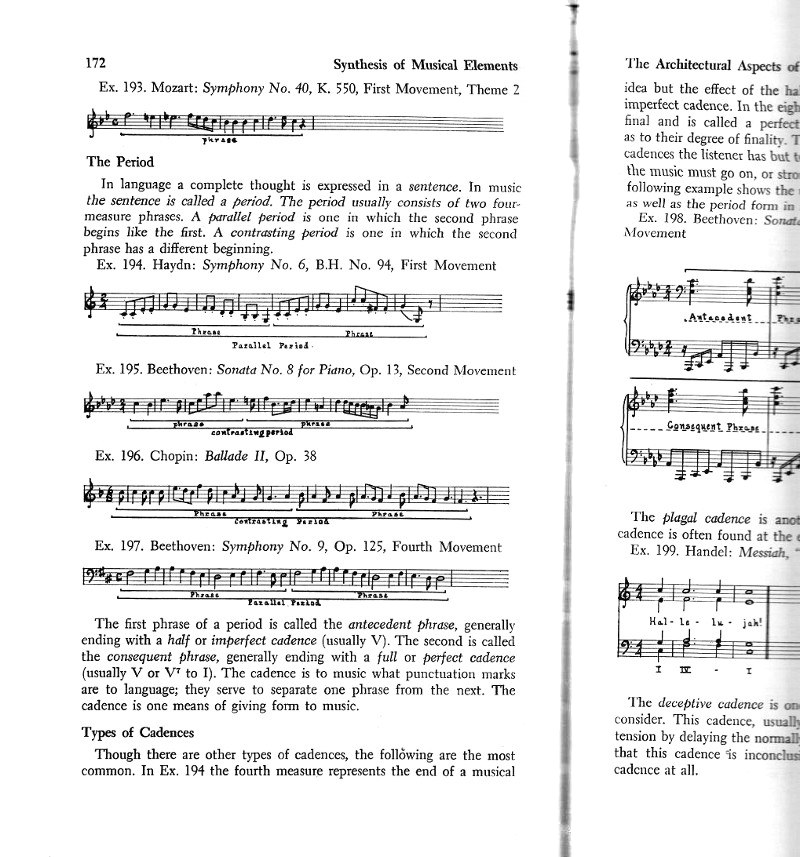
Problem: It’s difficult to go through the musical examples. One must look for the recordings, or try to play them on an instrument (or sing). In some books, musical examples are printed in a separate section and referred through out the book (Refer: Ex. 1…). This makes reading the book unnecessarily complicated while the material discussed itself may not be that difficult.
Varnam Tables
Year II of carnatic music courses in government music colleges in Andhra Pradesh and Telangana include eight adi thala varnams. Here are two tables presenting the list of varnams in musically meaningful ways–such as, based on melakartha ragas, listing the avartham count in each section (useful while performing the varnams in various speeds and gathis)
Suggest a name for this music
Carnatic Mela Ragas Chart
Scales of Carnatic mela-ragas in western music notation. Will be a handy reference.
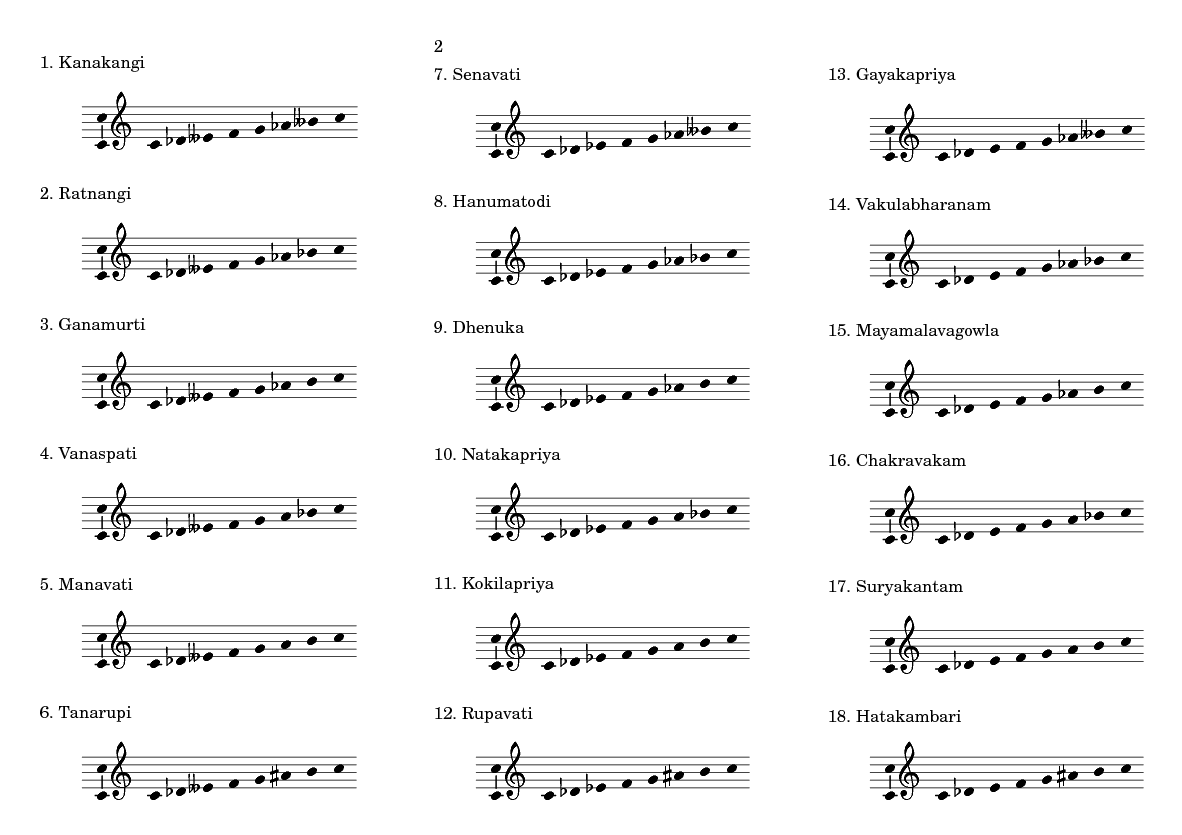
Carnatic Notations Library
I’ve created a library for Carnatic Music Notations. One can download Carnatic Music Notations/Scores for Varnams, Kritis from here. These notations are created by me and can be shared freely among carnatic music students, teachers and practicioners for non-commercial purposes.
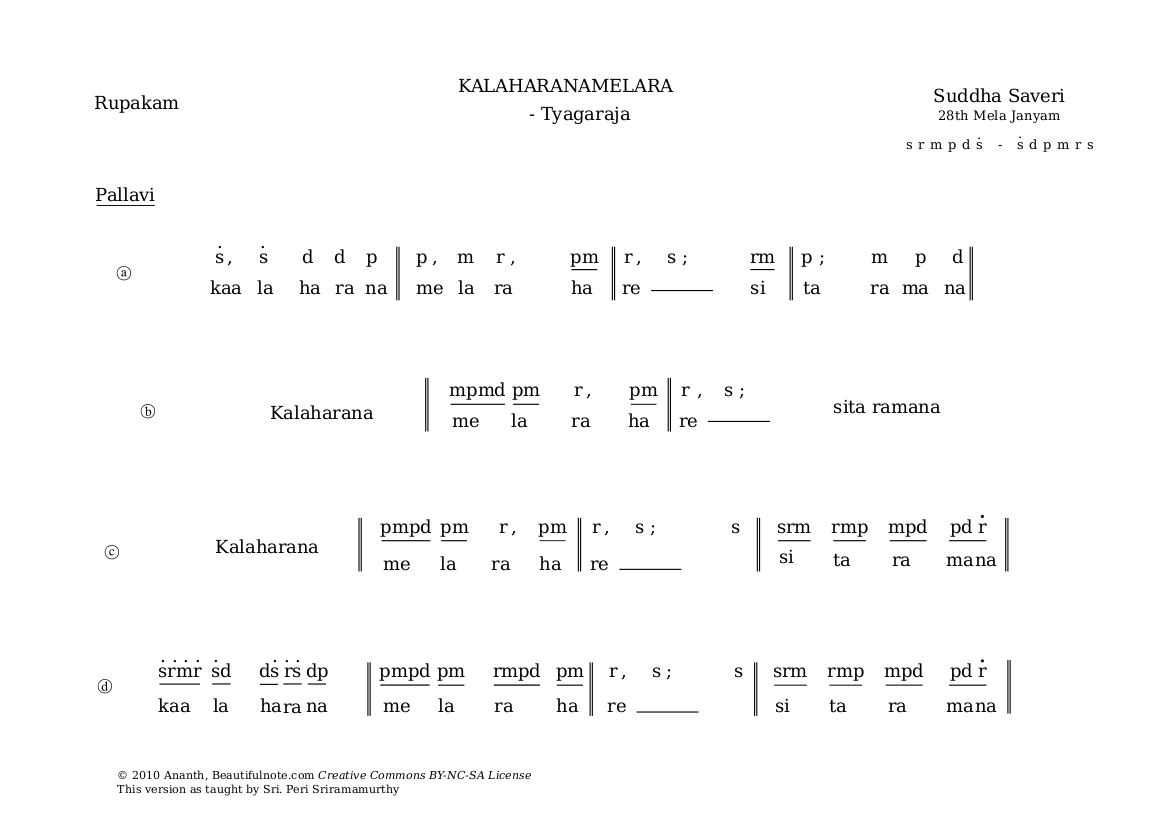
An Avant-Garde Tuesday
An Avant-Garde Tuesday, Composed and Performed by Ananth.

Concert: Aug 30 & 31, 2010 YWCA Hall, West-Marredpally, Secunderabad
Occasion: Annual day celebrations, Sri Bhakta Ramadas Govt. College of Music and Dance.
Score: Mahaganapatim (Kriti) – Naattai – Eka – Dikshitar
- Kriti: Maha Ganapathim
- Ragam: Naattai
- Thalam: Eka
- Composer: Muthuswamy Dikshitar
- Sheet Music in Western staff notation
Download: Carnatic Music Theory Books
Here are introductory books on carnatic music theory. I wrote these books as an easy-to-follow introduction, for people who are interested in this system of music.
Written in English, this material is prepared for the syllabus framed by Potti Sriramulu Telugu University. Government music colleges in Telangana and Andhra Pradesh follow this syllabus. If you’re a music student from these colleges or a private candidate, preparing for Certificate in Music (Karnataka Sangeetham) examinations, these books will be of great help.
Staff Notation/Score for Dharbar Varnam
- Composition: “Chalamela” (Varnam)
- Ragam: Dharbar
- Thalam: Adi
- Composer: Thiruvotriyur Tyagayyar
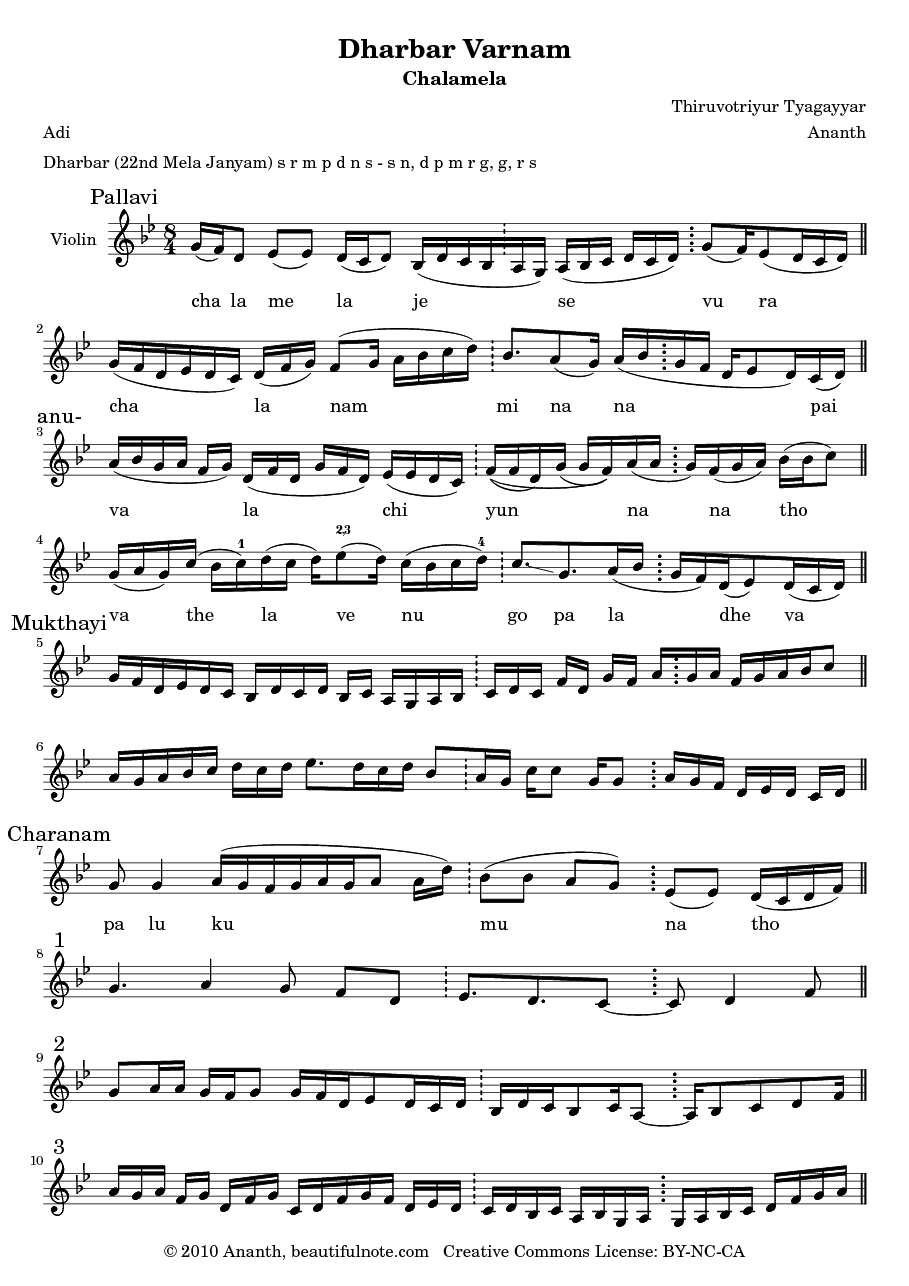
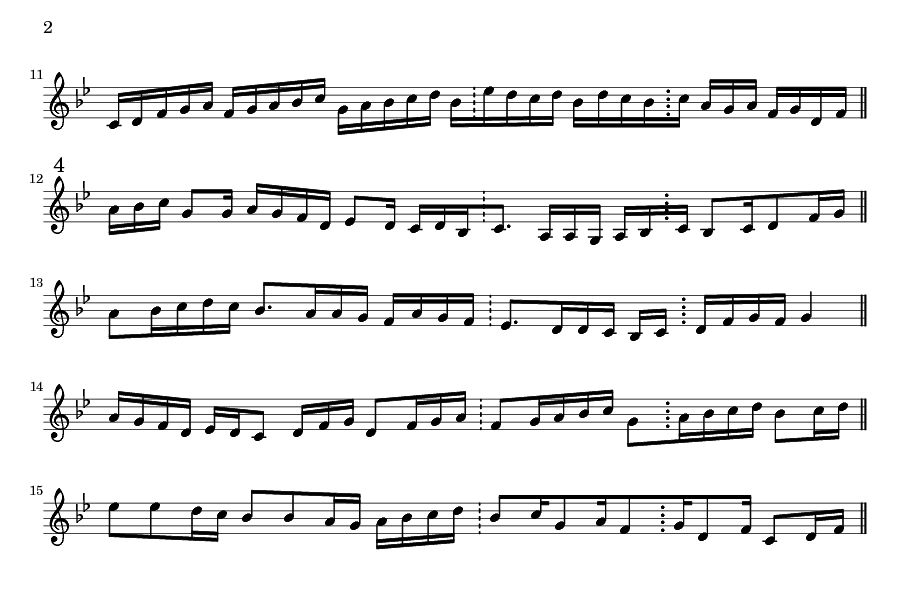
Welcomes to BeautifulNote.com
Warm welcomes to BeautifulNote.com. Here you can -
Ananth Pattabiraman is a musician and co-founder of Kuyil Carnatic Apps, a startup dedicated to crafting apps for carnatic. You can checkout the apps below.
